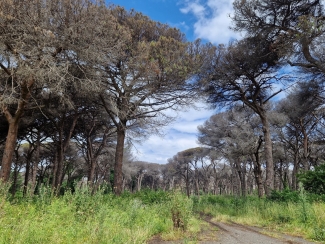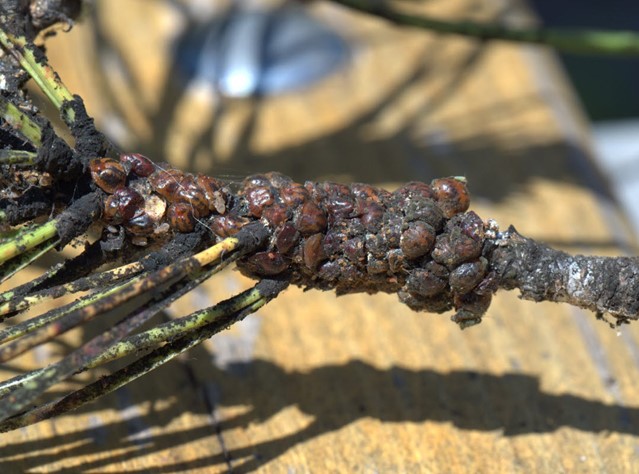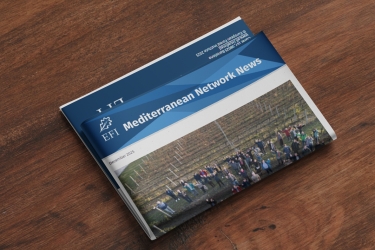The threat to Italy’s iconic stone pines

Visitors returning to Rome or Naples after some time away may be shocked by the state of the cities’ iconic stone pines (Pinus pinea). Their flat, spreading crowns, the reason for their alternative name of umbrella pine, are no longer dense and dark green. Most have scant cover with brown patches, and several appear to be completely brown and dead.
The cause is a small insect, the pine tortoise scale (Toumeyella parvicornis), that attaches to its mouthparts and feeds on the sap it sucks from the trees. Because sap is relatively low in protein but high in sugar, the insects secrete excess sugar in the form of honeydew, which promotes the growth of sooty mould that impairs photosynthesis, weakening the tree and encouraging other fungi and pests.
Pine Tortoise Scale
Like the pines themselves, which spread from the western Mediterranean after the previous ice age and were brought to Italy by Etruscans and Romans for their nuts and timber, the pine tortoise scale insect was introduced, probably by accident. It arrived in the Naples area from North America around 2014. The climate suited it, and in the absence of natural predators it spread rapidly. Within four years, it had infested trees in Rome and throughout coastal regions near the two cities.
Stone pines are very common in Rome, where there are believed to be some 60,000 trees along the streets and in parks and gardens. They have even given their name to whole districts, like Pigneto. Infestation has greatly magnified the risks posed by stone pines. The weakened crown is likely to be attacked by the pine shoot beetle (Tomicus destruens), until recently the foremost pest of stone pine. Heavy upper limbs, damaged by pests, are more easily broken by high winds, damaging people and property below. Honeydew dripping from the feeding insects adds extra inconvenience.
A survey in 2018 indicated that about 80% of the stone pines in Rome had been attacked to some extent, with widespread infestations elsewhere. In response, in 2021, Italy passed a national law making control compulsory.

Control Efforts
External treatment with pesticides is challenging because the insects are high in the tree crown and there is a risk to the surroundings. Spraying can, however, be useful in nurseries and for isolated, culturally important specimen trees.
Endotherapy, whereby trees are injected with the pesticide abamectin, has proved more suitable. Most public trees in Rome were treated in the summer of 2022, with some retreated in 2023, and if less than 50% of the crown is damaged the trees usually recover. More research is needed to determine the most effective methods to deliver the pesticide. In addition, endotherapy may be more effective when coupled with silviculture to remove the most damaged limbs and open up the canopy.
Despite the law, however, many trees in private gardens remain untreated. Enforcement is weak, and experts worry that these trees could act as a reservoir for further infestations.
The Future
Looking forward, researchers are studying the genetics of stone pines to try and determine whether some provenances and individuals may be more resistant to pine tortoise scale, with a view to using these progenies to replace dead trees. One difficulty is that stone pine is extremely low in genetic diversity.
There is also a worry that although stone pine is perhaps the most susceptible species, pine tortoise scale can infect other European species, including P. silvestris, P. pinaster, P. nigra laricio and P. mugo. A recent outbreak in France may represent a separate infestation, although it could be the result of very young pine tortoise scale insects being carried that far on the wind. In any case, it will require coordinated research across southern Europe to deal with this new and destructive pest.
More information
- European Forest Institute’s article – The pine forests of Rome: an ecosystem and a scenic beauty under threat (Download PDF)
- EUFORGEN’s blog article – Stone pine’s fascinating genetics


